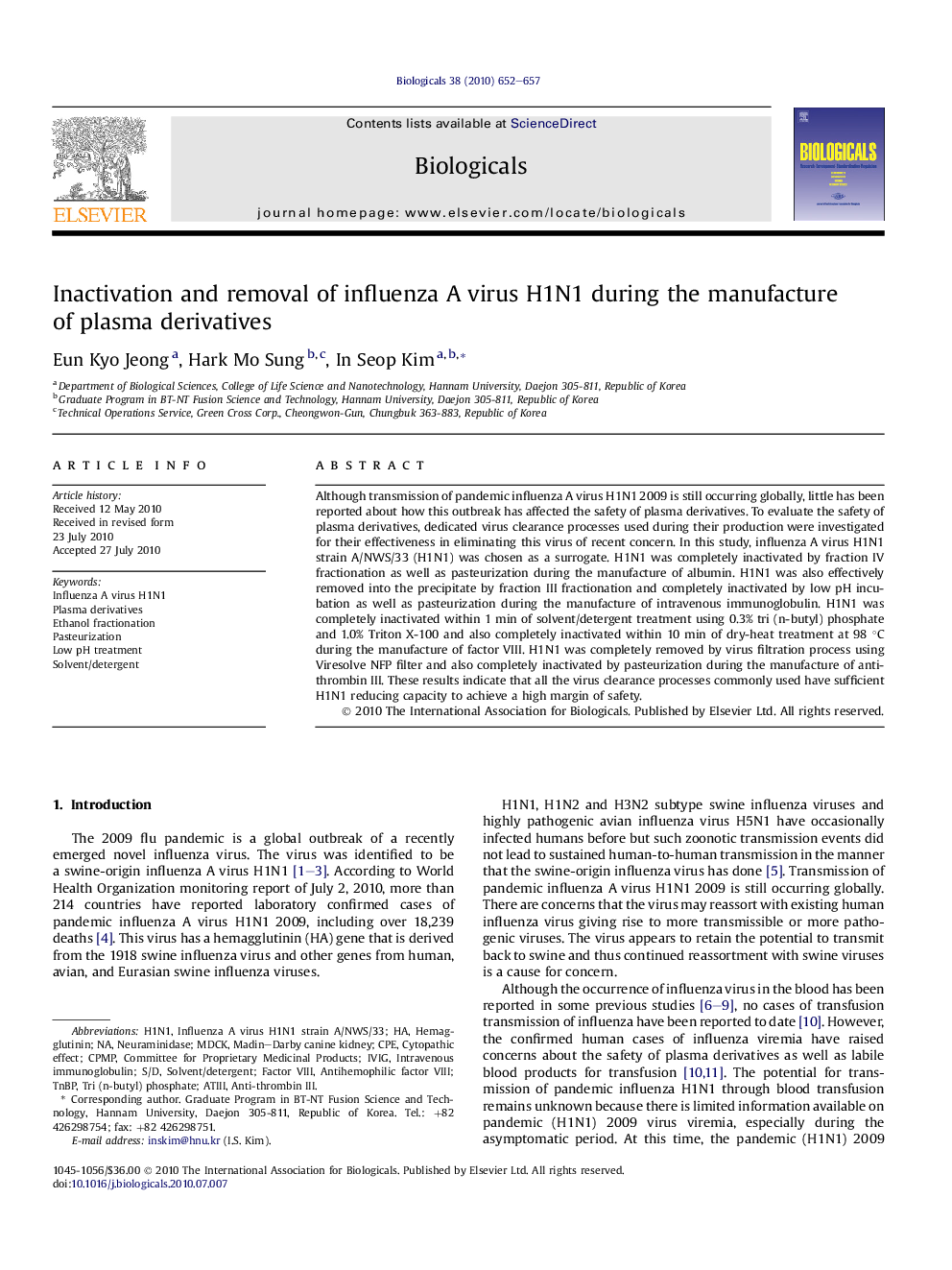| Article ID | Journal | Published Year | Pages | File Type |
|---|---|---|---|---|
| 2034453 | Biologicals | 2010 | 6 Pages |
Although transmission of pandemic influenza A virus H1N1 2009 is still occurring globally, little has been reported about how this outbreak has affected the safety of plasma derivatives. To evaluate the safety of plasma derivatives, dedicated virus clearance processes used during their production were investigated for their effectiveness in eliminating this virus of recent concern. In this study, influenza A virus H1N1 strain A/NWS/33 (H1N1) was chosen as a surrogate. H1N1 was completely inactivated by fraction IV fractionation as well as pasteurization during the manufacture of albumin. H1N1 was also effectively removed into the precipitate by fraction III fractionation and completely inactivated by low pH incubation as well as pasteurization during the manufacture of intravenous immunoglobulin. H1N1 was completely inactivated within 1 min of solvent/detergent treatment using 0.3% tri (n-butyl) phosphate and 1.0% Triton X-100 and also completely inactivated within 10 min of dry-heat treatment at 98 °C during the manufacture of factor VIII. H1N1 was completely removed by virus filtration process using Viresolve NFP filter and also completely inactivated by pasteurization during the manufacture of anti-thrombin III. These results indicate that all the virus clearance processes commonly used have sufficient H1N1 reducing capacity to achieve a high margin of safety.
